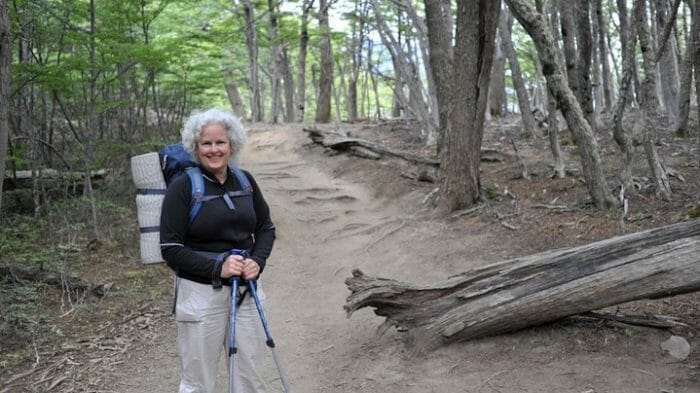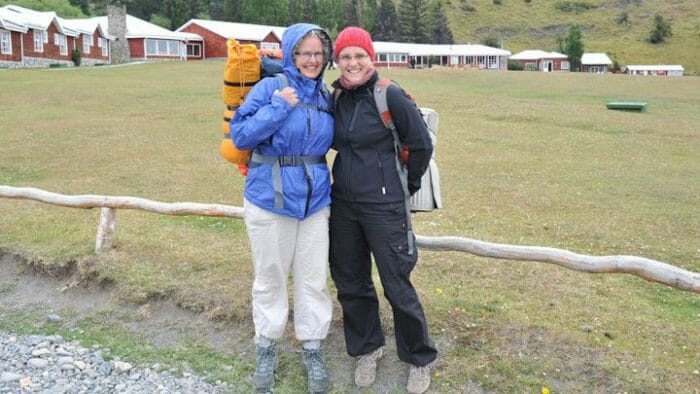
I met Noemie on the Navimag ferry. Here we are at the beginning of our hike.
I spent a lot of time figuring out how to travel to Patagonia.
There were plenty of inspiring photos of Patagonia and Torres del Paine National Park but I found little on how to get there. I had so many questions.
That solo trip was quite some time ago. Since this post is still used by hundreds of people every month as they plan their travels to spectacular Patagonia I thought it wise to verify the information and give it an update.
So here you go…
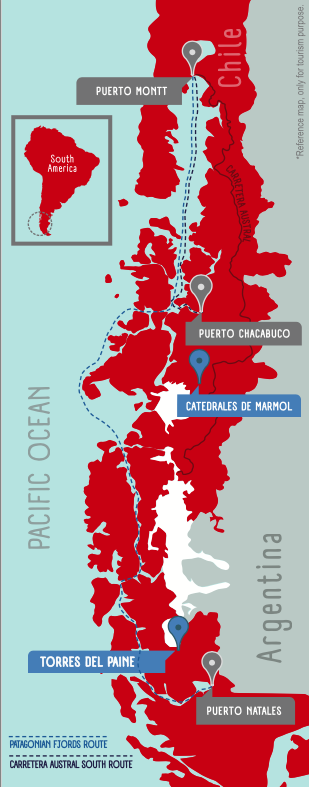
The Navimag ferry runs from Porto Montt to Puerto Natales.
10 Tips for Traveling Solo to Patagonia
- Take the Navimag. I can't recommend the Navimag Ferry enough. It's an absolutely spectacular journey that goes through Chile's southern fjords traveling between Porto Montt and Puerto Natales and it is perfect for solo travelers. A few details.
- It takes four days and three nights.
- It is not a cruise ship. It is a car and truck ferry that takes foot passengers as well and offers a variety of sleeping accommodation. Think of it like a floating hostel. I chose a four-bed cabin with a bathroom down the hall. There was an upper and lower bunk on either side of the cabin. I shared it with a couple from the UK and a gentleman from France.
- The food is basic and adequate. ‘nough said.
- There were many solo travelers on board which made the trip great fun! It seemed that most found a partner to hike Torres del Paine with by the end of the trip. I ended up hiking and camping with Noemie, a woman from France.
- Book at least one night in Puerto Natales. The Navimag ferry arrives in Puerto Natales later in the day so you'll need to book at least one night there. There is a variety of accommodation from hotels to B&Bs to hostels. I stayed at Erratic Rock and it was just fine though I'm sure that there are others that are equally fine in the town. The benefit of Erratic Rock is that they rent equipment and have the Torres del Paine hiking seminar. See below.
- Plan your hike. Decide how you want to experience the park. There is a free seminar every day at 3pm at the Erratic Rock Base Camp that will help you decide how to approach the hiking options in Torres del Paine and answer all your questions about the park. It's well worthwhile. They also have a variety of guided programs and expeditions you can sign up for though they are not necessary. If you hike on your own you have five basic options:
- The Full Circuit
- The full W
- Parts of the W
- A bus tour (no hiking)
- The ferry to the Grey Glacier (no hiking).
- Check the weather. The big prize of any hike in Torres del Paine is the North Towers or the Cordillera Paine
and they are often in the clouds. Check the weather and plan your hike so that you are more likely to ascend this trail on a clear day. - Getting to the park. There are two buses a day running between Puerto Natales and Torres del Paine. They leave at 7:30am and 2pm and they take about 2 hours. If you're planning to drive make sure you have plenty of fuel as the only gas stations are in Puerto Natales.
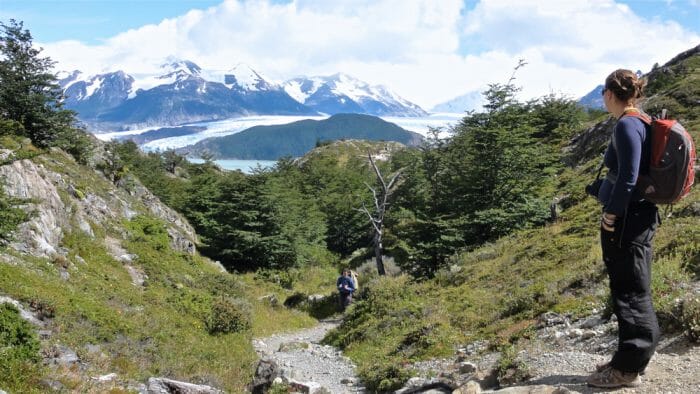
Noemie on the trail to the Grey Glacier on the other side of the W.
- Take cash into the park. Almost everything in the park is cash only so, unless you plan to hike every step of the way, carry your food and camp, you'll need money. Here are some approximate costs.
- 21,000 / US32 – park entry during high season.
- 30,000 / US$50- shuttles, buses and ferries within the park. Given how much time we had we walked the two sides of the W and had to bus/ferry between the sides.
- 6,500 / US$10 per person/night
- 3,000 / US$10- Pisco Sours – of course!
- 10,000 / US$15 – a meal at the Grand Paine Refugio.
- Rent or bring hiking poles. I know it sounds lame but they do make a huge difference and everyone should use poles. They won't only make the trek easier, but they will save your knees for later in life if you're an avid hiker. I couldn't believe how great they were.
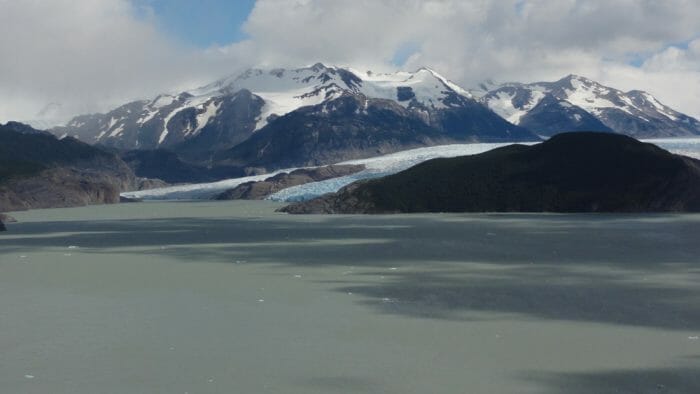
The Grey Glacier.
- Plan your accommodation. I rented camping equipment from Erratic Rock which is the cheapest form of accommodation you can get in the park. Once you have your equipment, there is no need for reservations. If you don't want to camp, you can stay in a Refugio, though I would make reservations in advance to ensure that you have a bed. If you really want luxury there is the Las Torres Hotel.
- What/where to eat. At the Refugios, you have the option of full board meaning that, in addition to giving you your breakfast and dinner, they'll pack you a lunch for your day hiking. Even if you camp you can go to a Refugio and buy a meal. At the Grand Paine campground there was a kitchen building with stoves and sink. At the campground near the Torres (and I'm assuming for most of the circuit) there were no restaurants or cooking facilities.
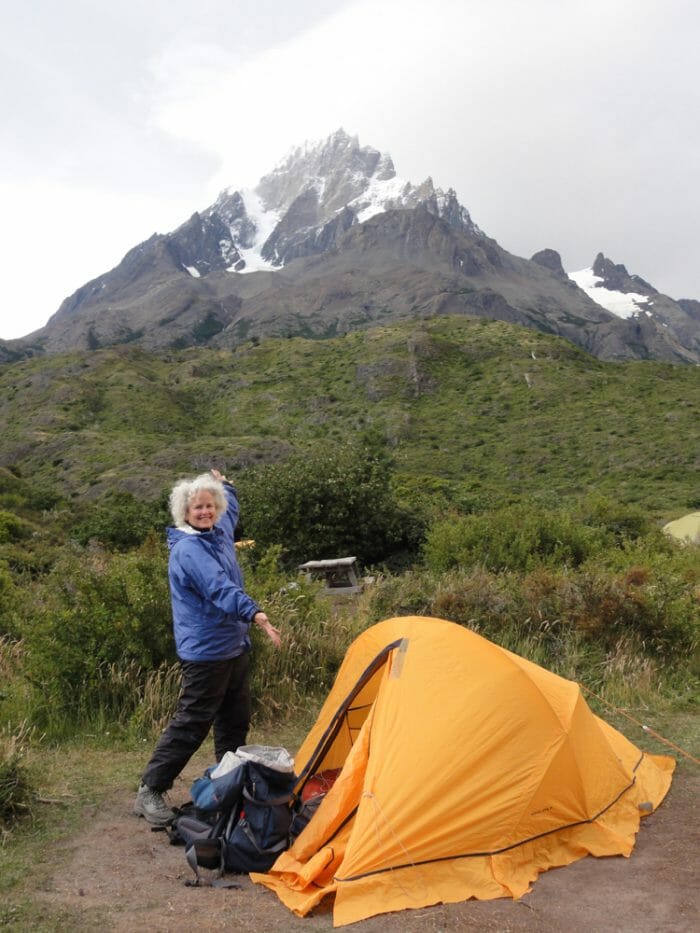
Our spectacular accommodation.
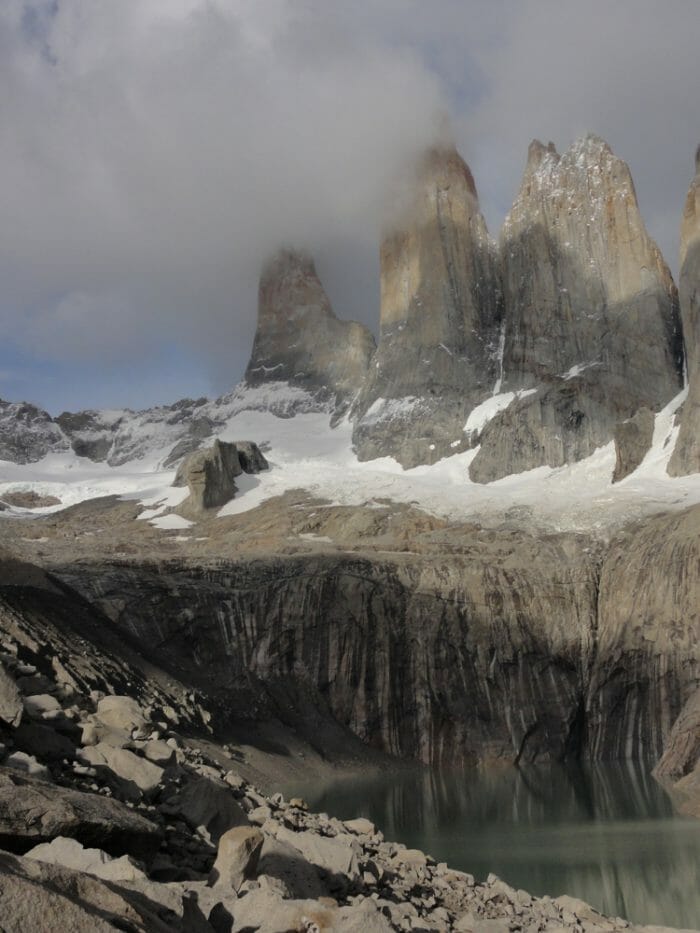
The Towers is the grand prize of hiking Torres del Paine. The trail is a little rocky towards the top.
- What to pack. When you're hiking, you need to keep what you're carrying to a minimum. Scale down your luggage and, if necessary, leave a bag at a hostel before you go to the park. For four days I wore/carried:
- 2 t-shirts
- 2 long sleeve shirts
- 2 pairs of pants
- rain gear
- two pairs of high quality hiking socks, underwear
- toiletries…
- camera, sunglasses, passport…
- nuts, dried fruit, etc.
- hiking poles
- tent, etc. if needed
If you don't have the time to take the Navimag Ferry, you can fly to Puerto Natales or Punta Arena. Before leaving on this trip I knew that I would have to fly back to Santiago due to lack of time. When I priced it via LAN it looked like it would cost about $500. When in Chile, I learned about SKY Airlines and booked for $178 all in.
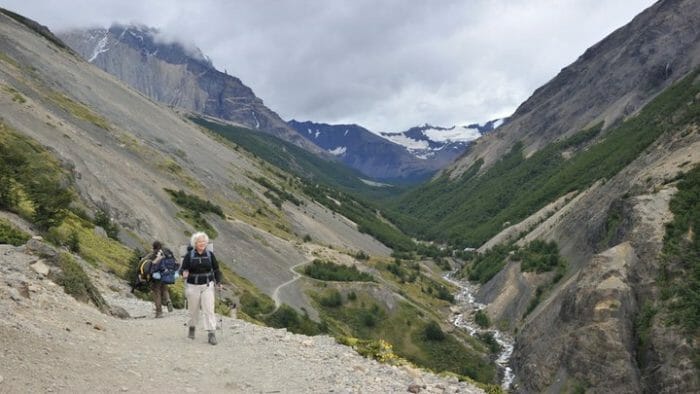
Absolutely spectacular hiking.
